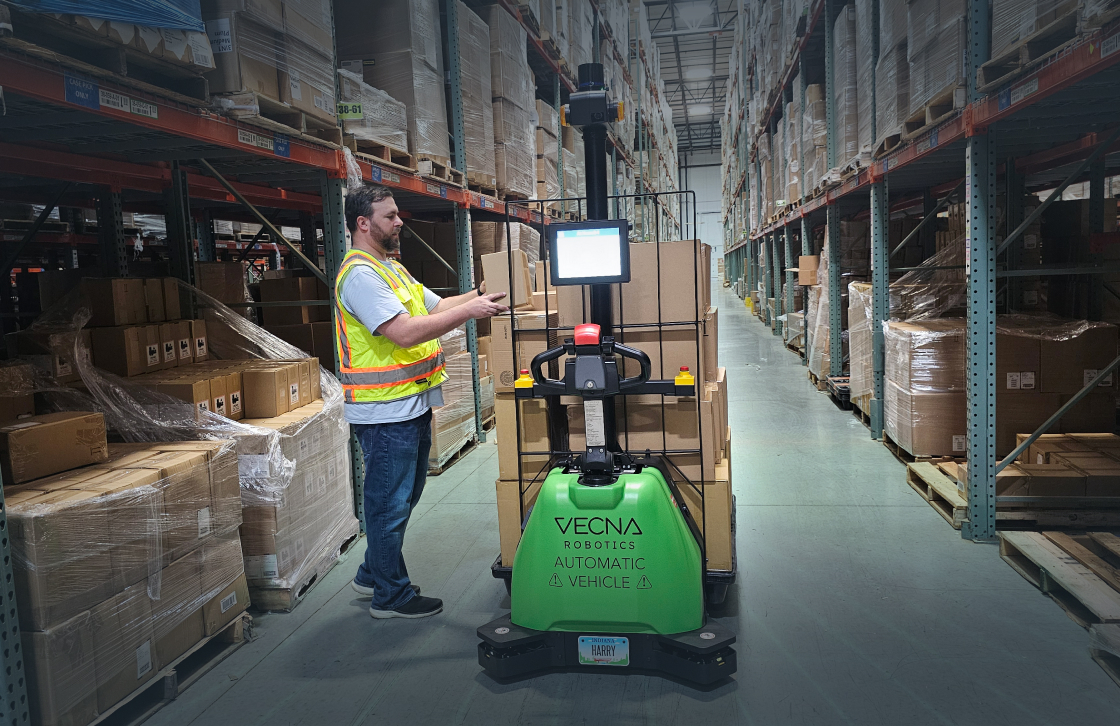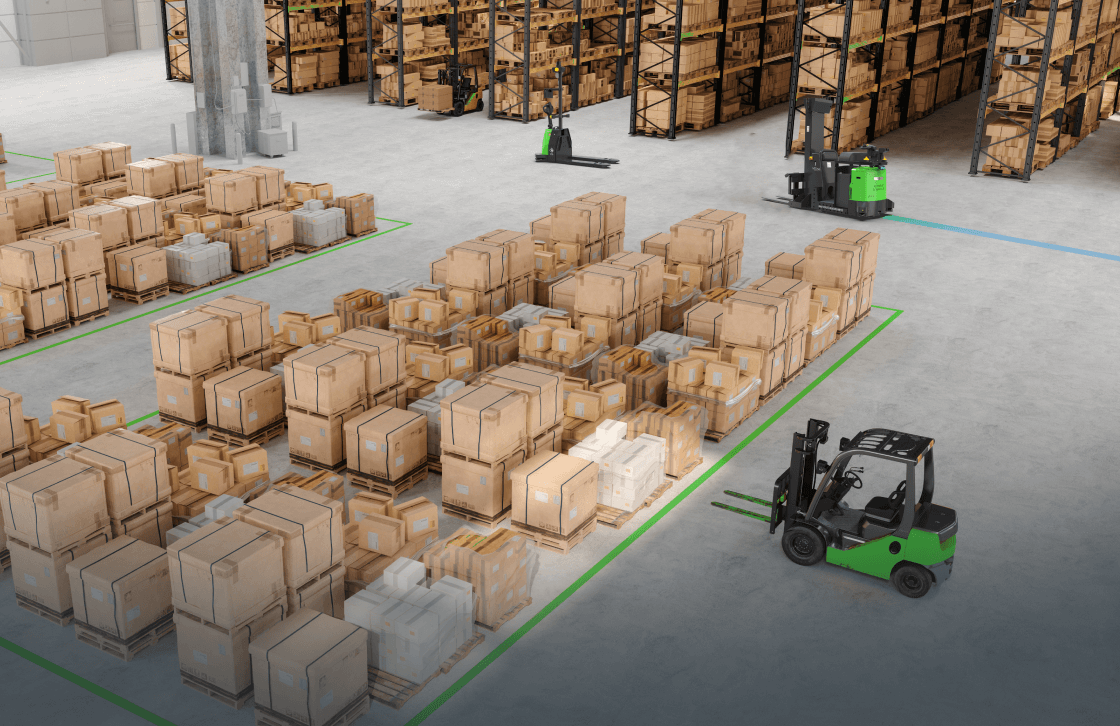Nearshoring is the practice of relocating a business’s operations to a location closer to the company, typically in a different country within the same region. Nearshoring offers companies a new twist on the practice of offshoring, wherein companies move operations to a country far outside their native country – typically to take advantage of lower labor cost.
Nearshoring trends
Nearshoring has recently become a powerful trend for material handlers. A 2022 ABB survey found that 70% of U.S. businesses are planning changes in their operations, with 30% looking to nearshore their operations to a closer location.
So why are more and more companies looking to nearshore?
Benefits of nearshoring
Nearshoring offers material handlers a means to escape the unyielding supply chain disruptions that have made “far-and-cheap” offshoring strategies increasingly slow and expensive, as well as the labor shortages and rising wages that make operating out of the United States a costly proposition. Popular nearshoring destinations for US companies include Canada, Mexico, and Latin America—which offer more abundant and affordable labor than the US, on top of shorter supply lines needed to build resilient supply chains. Other top benefits of nearshoring include:
- Cost savings through reduced transportation expenses
- Greater supply chain control and visibility
- Improved quality control through proximity to operations
- Quicker time-to-market and increased responsiveness
- Enhanced agility in response to changing market conditions
- Improved cultural understanding for better collaboration
- Better customer service due to proximity to customers
- Reduced risk through greater stability and familiarity
- Increased flexibility to adjust to changing demand
- Improved sustainability through reduced environmental impact
With these benefits in mind, it’s little wonder many companies are nearshoring as a part of their long-term strategies.
What to look out for with nearshoring
Though the benefits of nearshoring are clear, there are a few key considerations you’ll want to keep in mind before climbing aboard the nearshoring train. Nearshoring alone is not a silver bullet for supply chain and labor woes. Some issues companies may frequently encounter when nearshoring include:
- Higher labor costs in some regions can offset transportation savings.
- Limited availability of skilled labor can result in higher costs or difficulty finding the right talent.
- Compliance and regulatory issues require careful evaluation and adherence.
- Language and cultural barriers can create communication and collaboration challenges.
- Political and economic instability in certain regions can disrupt operations and increase risk.
- Infrastructure and logistical challenges can result in increased costs or delays.
- Intellectual property risks can be higher in regions with weaker IP protections.
- Increased competition can result from lower labor costs in nearshored regions.
- Perception and reputation risks can result from nearshoring to regions with poor labor or environmental standards.
As John Sheff, Director of Public and Industry Affairs at Danfoss, said in Automation World’s March 2022 publication: “American industries are not going to compete with overseas factories by manually building products faster.” To avoid these pitfalls, remain competitive and weather prolonged disruptions, companies should implement innovative automation as a part of their nearshoring strategies. In this article, we’ll examine some of the biggest ways in which automation can assist companies in nearshoring, maintaining competitiveness, and establishing long-term, robust, and stable supply chains.
1. Automation helps nearshoring companies mitigate quality risks and optimize labor.
With labor costs rising in traditionally affordable locales like China and painful labor shortages continuing to plague the United States, many companies may see nearshoring as the best-cost scenario. However, nearshoring may involve additional costs related to training and adaptation to different regulatory laws, business cultures, quality, and productivity standards in the host country. In many cases, these costs can be recouped faster by complementing nearshoring efforts with automation. Flexible automation like autonomous mobile robots (AMRs) and co-bots can help optimize labor resources by automating repetitive time-losing tasks—keeping workers happier and offering efficiency gains up to 85% greater than human labor alone. But the benefits don’t stop at just increased productivity. As an MIT report on autonomous robots stated, “customers buy robots to become productive, but then discover that the biggest change is greater quality and reliability in their operations.”
2. Automation helps nearshoring operations keep up with e-commerce-driven customer demands.
The Amazon effect continues to push the pace of the market and consumer expectations to new heights. Now, more than ever, ensuring customer satisfaction is vital for the success of manufacturers and warehouses. Nearshoring reduces lead times by shortening the distance between the production facility or warehouse and the end consumer. This can lead to faster delivery times, which can increase customer satisfaction. However, nearshoring companies may need help shifting to new suppliers or equipment, which could affect availability in the short term. Flexible automation can alleviate these initial challenges while providing long-term benefits. Unlike traditional automated guided vehicles (AVGs), autonomous mobile robots (AMRs) can easily adjust their routes as a factory layout changes or new lines are introduced. Additionally, automation software allows companies to quickly repurpose and reconfigure their deployments in response to changing circumstances, enabling them to rapidly increase or decrease production as needed.
3. Automation accelerates nearshoring ROI.
Nearshoring can bring numerous benefits to businesses but also requires a significant investment. Fortunately, intelligent automation provides a more straightforward path to return on investment for manufacturers and warehouses looking to keep their nearshoring efforts on track and maximize the value of their investment. Automation solutions like Vecna’s provide real-time data and analytics to manufacturers and warehouses, so they can make informed decisions about their processes and identify opportunities for optimization. The result? Increased efficiency, productivity, and cost savings. Automation can also reduce the risk of human error and facilitate ongoing improvement. Automated systems track parts and assemblies down to the component and process level, allowing companies to rework or redirect products and adjust tasks to optimize their operations. This detailed control over operations helps manufacturers and warehouses get the most out of nearshoring and achieve long-term success.
Nearshoring can make manufacturing and distribution operations more resilient to global supply chain disruptions and more competitive in labor shortages. While completely eliminating offshore or reshoring strategies may not be realistic for all companies, exploring nearshoring can give beleaguered warehouses and manufacturers an edge in today’s market. Flexible automation solutions, including robotics, can help material handlers overcome the potential pitfalls of nearshoring and be more adaptable in an ever-shifting landscape. To learn about how Vecna can help you nearshore and reshore check out “Build Back Better with Bots: Why You Need Automation as the Centerpiece of Your Reshoring Initiative”.
If you’re ready to get started with an initial assessment, contact us to set up an appointment with a Vecna Robotics automation expert.





